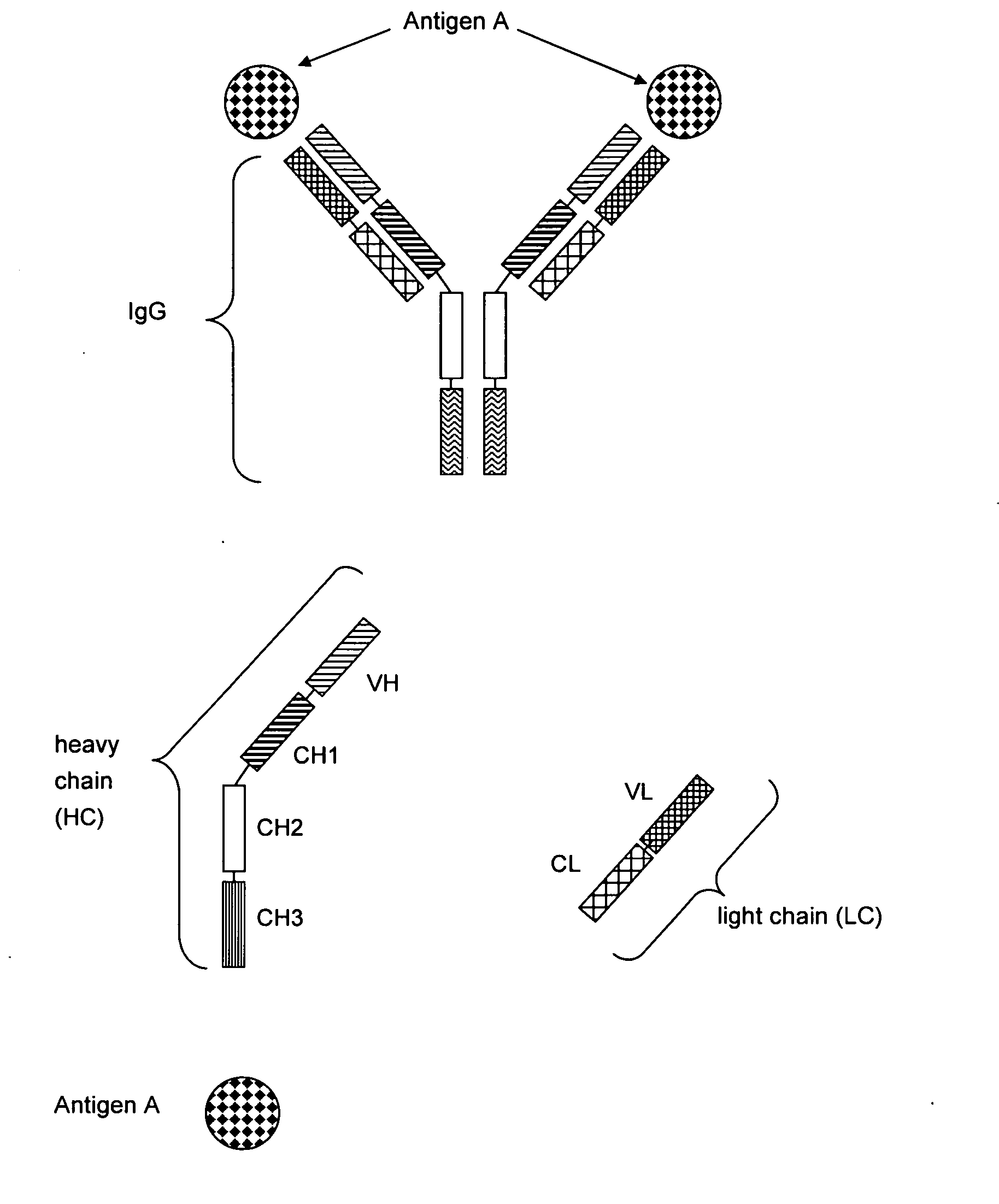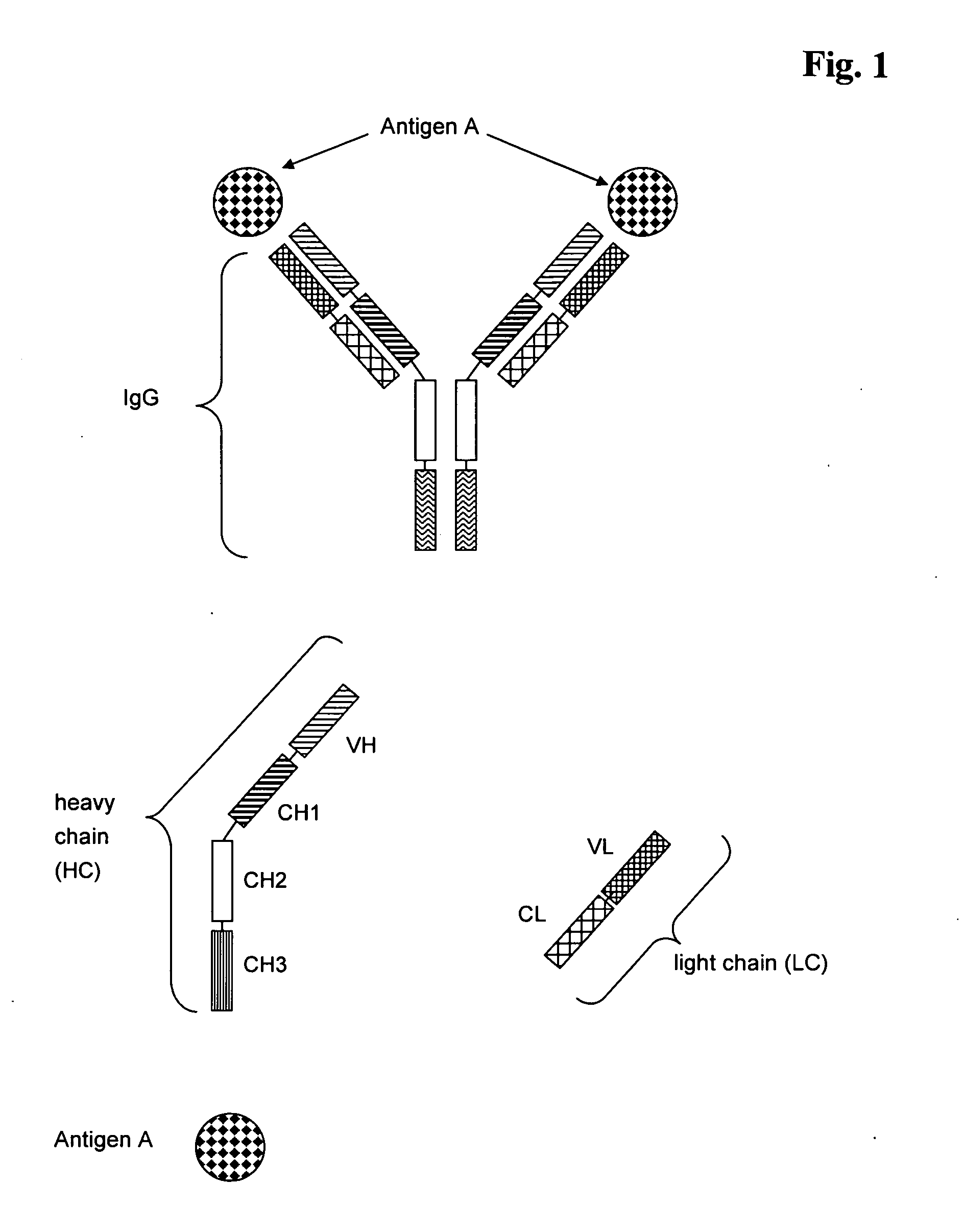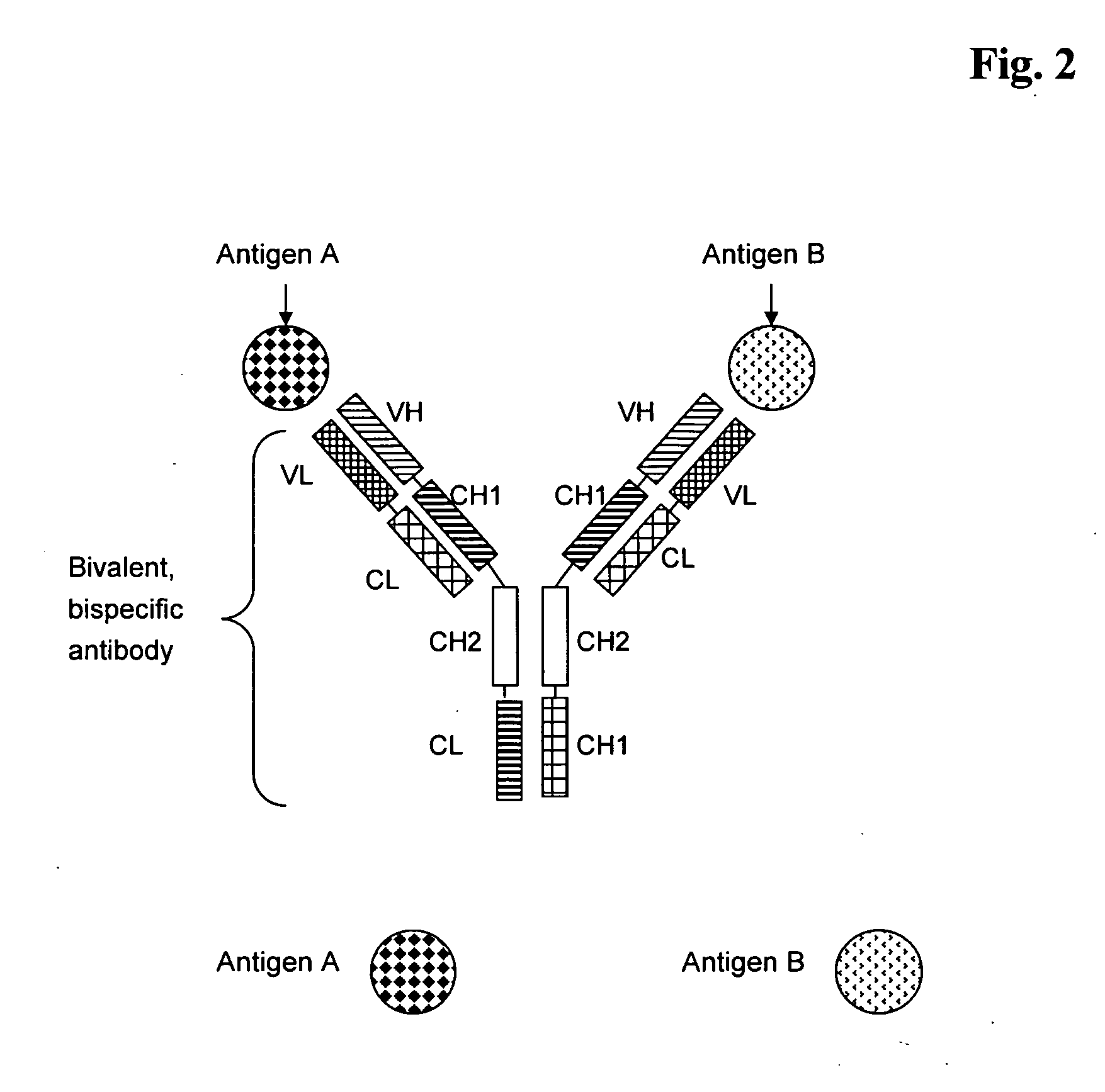Bivalent, bispecific antibodies
a technology of bispecific antibodies and antibodies, applied in the field of bivalent, bispecific antibodies, can solve the problems of mismatched byproducts, poor antibody stability, aggregation and increased immunogenicity, and no data describing the progression towards the clinic are currently available, so as to facilitate purification and improve the yield of recombinant production
- Summary
- Abstract
- Description
- Claims
- Application Information
AI Technical Summary
Benefits of technology
Problems solved by technology
Method used
Image
Examples
example 1
Production, Expression, Purification and Characterization of Bivalent, Bispecific Antibody, Wherein in the Heavy Chain of the Antibody Part, the Heavy Chain Domain CH3 is Replaced by a Constant Heavy Chain Domain CH1, and Wherein in the Heavy Chain of the VL-VH / CL-CH1 Exchange Antibody, the Heavy Chain Domain CH3 is Replaced by a Kappa Constant Light Chain Domain Ck (Abbreviated Herein as CH3-CH1 / CH3-Ck Exchange Antibody)
example 1a
Making of the Expression Plasmids for the Modified Fc Region with CH1-Ck for CH3-CH3 Exchange
[0154]In order to show that the CH1-Ck for CH3-CH3 exchange can be applied for the generation of bispecific antibodies via induction of heterodimerization of the respective Fc regions an antibody construct according to FIG. 5 was generated. For this sake plasmids for the co-expression of a wildtype antibody against IGF-1R and a VL-VH / CL-CH1 exchange antibody against Angiopoietin-2 were modified by exchange of the CH3 domain in the wildtype antibody with a CH1 domain and of the CH3 domain in the VL-VH / CL-CH1 exchange antibody with a CL (Ck) domain. The four corresponding plasmids were subsequently co-expressed and the generated antibody purified.
[0155]The sequence for the heavy variable domain including the respective leader sequence of the wildtype antibody heavy chain HC# with CH3-CH1 exchange was derived from a human antibody heavy chain (SEQ ID NO: 1) described in WO 2005 / 005635, an...
example 1b
Transient Expression and Purification of the Bispecific CH3-CH1 / CH3-Ck Exchange Antibody with Modified Fc Region
[0162]In the following, the four plasmids coding for the modified heavy chain HC# (pUC-HC#-IGF-1R) (SEQ ID NO: 3) and for the modified VL-VH / CL-CH1 exchange antibody heavy chain HC## (pUC-HC##-ANGPT2) (either SEQ ID NO: 8 without Cysteine residue or SEQ ID NO: 9 with Cysteine residue) were transiently co-expressed at equimolar ratios together with the respective light chain vectors for the wildtype light chain LC (pUC-LC-IGF-1R) (SEQ ID NO: 2) and the modified VL-VH / CL-CH1 exchange antibody light chain LC* (pUC-LC*-ANGPT2) (SEQ ID: 7), respectively as described above (FIG. 8). Bispecific antibodies were subsequently purified via Protein A followed by size exclusion chromatography as described above. FIG. 9 shows the SDS-PAGE of the purified protein from the two expressions either with the plasmid coding for the modified VL-VH / CL-CH1 exchange antibody heavy chain HC##...
PUM
 Login to View More
Login to View More Abstract
Description
Claims
Application Information
 Login to View More
Login to View More - R&D
- Intellectual Property
- Life Sciences
- Materials
- Tech Scout
- Unparalleled Data Quality
- Higher Quality Content
- 60% Fewer Hallucinations
Browse by: Latest US Patents, China's latest patents, Technical Efficacy Thesaurus, Application Domain, Technology Topic, Popular Technical Reports.
© 2025 PatSnap. All rights reserved.Legal|Privacy policy|Modern Slavery Act Transparency Statement|Sitemap|About US| Contact US: help@patsnap.com



